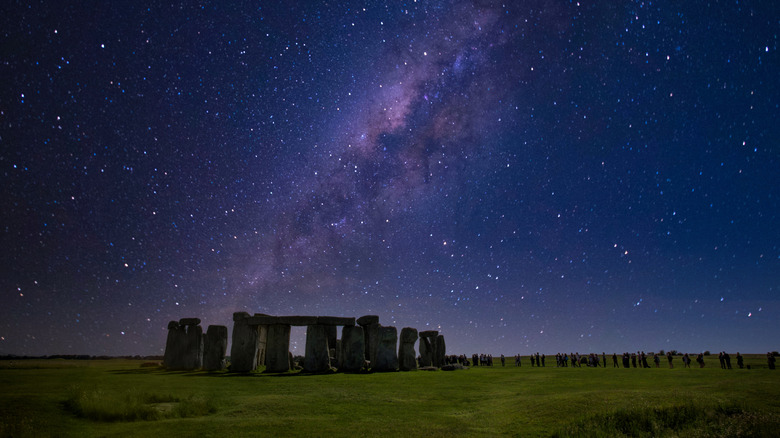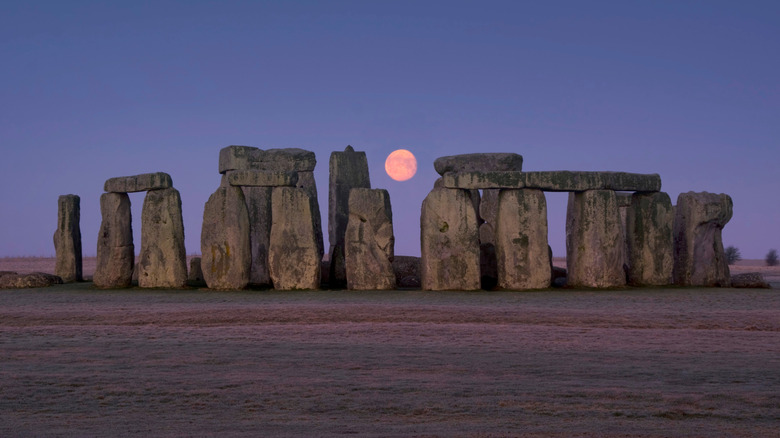A Rare Lunar Event Could Reveal Stonehenge's Secrets
The oldest documentation of astronomical studies that we know of were conducted by Babylonians as early as 1800 B.C. The civilization even appointed a group of officials to watch the night sky. Even though how ancient people used the stars and planets has changed over time, the Stonehenge monument is a testament to humans' intrigue in celestial movements. The stone circle was erected with its axes aligning with the summer solstice sunrise and winter solstice sunset. However, archaeoastronomers are finding out that the ancient stone design also aligns with lunar events, such as a major lunar standstill.
Less well known than lunar eclipses and the phenomenon of super blue moons, a major lunar standstill is an event that only happens every 18.6 years. Each month, the moon rises and sets at its northernmost and southernmost limits. Because of how the inclined orbit of the moon rotates, these points are as far apart as they can be during a major lunar standstill, extending beyond even the sun's most northerly and southerly positions. The event is similar to a solstice, during which the path of the sun is as far north or south of the equator as possible. While this so-called "sun still" only lasts a day or two, a major lunar standstill can last for two years.
Unlike celestial phenomena like eclipses, you can witness this event from anywhere in the world. It can be challenging, however, because the different moon phases still occur while the moon rises in one position and sets in another position. That's why the full phase is the best time to view a major lunar standstill.
How studying a major lunar standstill can reveal secrets about Stonehenge
The major lunar standstill of 2024 to 2025 has given Bournemouth University archeologists and undergraduates — as well as experts from the Royal Astronomical Society, the University of Leicester, and Oxford University — the chance to study the connection between the moon and the architecture of Stonehenge. A series of investigations have been conducted to track the moon's path across the sky during the event and how the moonrises and moonsets align with the stone megaliths.
The researchers and students documented the key moments when the moon could be seen in relation to the Station Stones, which mark the perfect rectangular points of a rectangle around the monument. It's believed that the builders, who likely consisted of several different tribes of people since it took about 1,500 years to complete, marked at least one major lunar standstill during its early construction. If that's the case, the event might have influenced the design and purpose — to observe the movement of the sun and moon in the sky. Another lunar connection is that the ditch around the circle was used as a burial ground for cremated remains centuries before the massive stones were erected, and a majority of those remains were placed to align with the moon's most southerly rising position during a major lunar standstill. Additionally, the Station Stones align with the extreme positions of the moon during such an event.
By understanding the connection, archaeoastronomers can determine the full purpose of Stonehenge. Perhaps tracking the moon with the stone circle was simply beneficial for agricultural timing or for knowing when the lunar deity was at its strongest. On the other hand, the various tribes may have used it to market significant religious, social, and spiritual celebrations.

